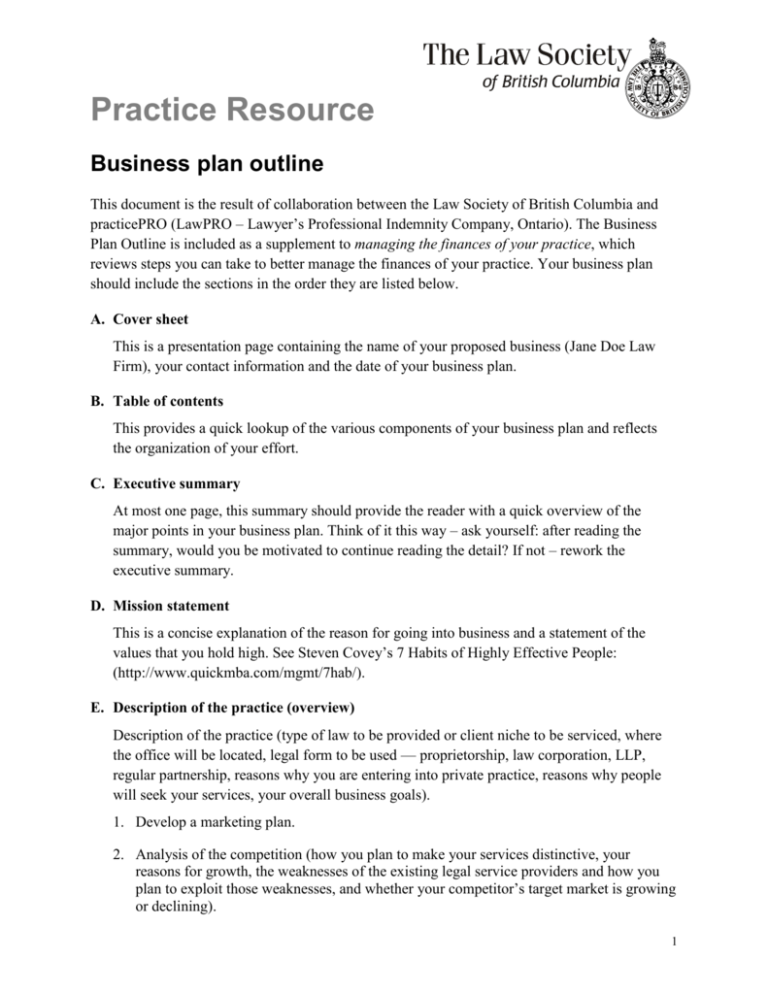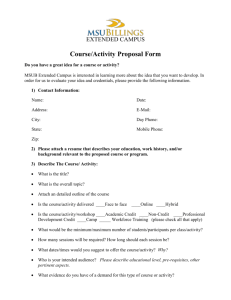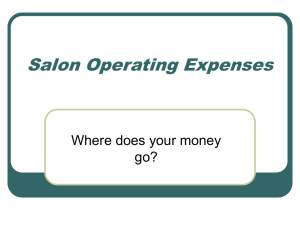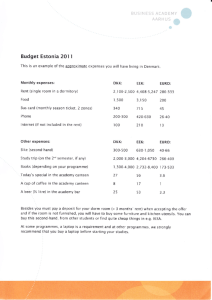Practice Resource: Business plan outline
advertisement

Practice Resource Business plan outline This document is the result of collaboration between the Law Society of British Columbia and practicePRO (LawPRO – Lawyer’s Professional Indemnity Company, Ontario). The Business Plan Outline is included as a supplement to managing the finances of your practice, which reviews steps you can take to better manage the finances of your practice. Your business plan should include the sections in the order they are listed below. A. Cover sheet This is a presentation page containing the name of your proposed business (Jane Doe Law Firm), your contact information and the date of your business plan. B. Table of contents This provides a quick lookup of the various components of your business plan and reflects the organization of your effort. C. Executive summary At most one page, this summary should provide the reader with a quick overview of the major points in your business plan. Think of it this way – ask yourself: after reading the summary, would you be motivated to continue reading the detail? If not – rework the executive summary. D. Mission statement This is a concise explanation of the reason for going into business and a statement of the values that you hold high. See Steven Covey’s 7 Habits of Highly Effective People: (http://www.quickmba.com/mgmt/7hab/). E. Description of the practice (overview) Description of the practice (type of law to be provided or client niche to be serviced, where the office will be located, legal form to be used — proprietorship, law corporation, LLP, regular partnership, reasons why you are entering into private practice, reasons why people will seek your services, your overall business goals). 1. Develop a marketing plan. 2. Analysis of the competition (how you plan to make your services distinctive, your reasons for growth, the weaknesses of the existing legal service providers and how you plan to exploit those weaknesses, and whether your competitor’s target market is growing or declining). 1 Law Society of British Columbia Practice Resource: Business Plan Outline 3. Operating procedures (office procedures and systems to put into place, physical plant description including layout of the office, required equipment list, amenities required by clients, such as elevators, parking, public transportation, etc.). 4. Staff (analysis of skills required for the proper running of the office and how those skills will be procured, draft of job descriptions reflecting these required skills). 5. Insurance needs (office, malpractice, personal, and how this insurance will be procured). 6. Financial overview. F. In-depth financial plan An ability to understand and apply the intricacies of the law does not necessarily translate into knowledge of how to set up and run a law practice. The ultimate success of your law practice is dependent on your ability to understand and manage the finances of your practice. You should be able to demonstrate your understanding of this very important part of your business. 1. Set up and describe your start-up budget (business capitalization). Many of these costs are one-time only and are separate from your operating budget. Include the following: Loan and credit facilities Equipment and services, and whether these are leased or purchased Personnel costs (prior to opening) Deposits, permits and office improvement costs Major equipment purchases Accounting startup fees Software and hardware costs Supplies Utilities Other services requiring retainers or down-payments 2. Balance sheet (assets, liabilities, retained equity). 3. Breakeven analysis (forecast timeline). Describe your sources of cash for all periods from startup up to your projected break-even date. Describe how you will repay these sources of cash after your practice turns a profit. 4. Pro-forma income and expense projections (profit & loss statements). 5. Three-year operating budget: Detail everything by month in the first year. Describe all costs including salaries, insurance, rent, loan payments, taxes, marketing costs, accounting and bookkeeping 2 Law Society of British Columbia Practice Resource: Business Plan Outline costs, payroll expenses, utilities, professional dues and subscriptions, repairs and maintenance costs, etc. Describe your budget by quarters in the second and third years. Estimate all fixed and variable costs and ‘unanticipated’ expenses. Build in all fixed expenses (rent, insurance, staff, leases) and variable (file disbursements, part-time staff, taxes and expenses that are dependent on the volume of business). Build in cash-flow lags, write-offs. Build in your draw. Formally state all assumptions upon which cash flows were based (to include: billings, salaries, income, collections and write-offs). 6. Describe how your accounting system will monitor your budget against actual costs. Show that you understand how to use your accounting system to produce the reports you need to manage your practice. Demonstrate that you understand the key financial indicators for your practice (WIP (work in progress), billings, billings per client, unbilled disbursements, accounts written-off, accounts receivable, changes in receivables, receivables as a % of total billings, etc.). 7. Supporting Documents: Tax returns of partners for the last three years Personal financial statements for all partners Copy of proposed office lease Copy of licenses and other legal documents Copy of resumes of all partners Copies of letters of intent from suppliers Any other relevant documents G. In-depth management plan Recall that bankers and others assume you know the law. They will be looking for evidence that you also know how to run a business. Your management plan, with your financial and marketing plans, shows that you have laid down the foundation on which your practice will be built. Your biggest expense in practice typically is staff, followed by rent. Accordingly, your management plan describes how you intend to use these human resources to your best advantage. The first step is to identify your traits, strengths and weaknesses and how you will hire staff to fill the gaps in your needs and abilities. For example, bookkeeping could be done by a lawyer, but it not an area in which lawyers are always trained. Furthermore, spending your 3 Law Society of British Columbia Practice Resource: Business Plan Outline time doing bookkeeping services is not the most effective use of your time. Hiring a parttime bookkeeper on a weekly or bi-weekly basis may be more cost-effective. You should be able to demonstrate that you have the necessary traits to lead and manage your employees. Describe how your business background and experience helps you to manage and run your practice. Describe how your staff will compensate for necessary and/or missing skills. Describe everyone’s duties in the office. In so doing, mentally go through a typical day and match up all things that need doing against your staff list. Describe any skills that need to be fulfilled by people outside of your organization and how often they will be required. What salaries, benefits and vacations will you be offering? How will you meet your staffing needs during vacations and absences? How often will you be absent from the office? Who assumes management duties during your absence? Describe how your personnel needs could change and how you will handle this. Describe your management structure and how decisions will be made. H. In-depth marketing plan 1. Target Market Describe how you propose to reach your target market. Describe your target market by identifying all common traits, aspects or factors. Describe your strategies to reach your target market — personal contact, newsletters, website, print media, advertising, etc. Show sample marketing materials. Describe how you will build your customer loyalty and referral network within your target market. 2. Budget Set out your marketing budget and allocate these marketing funds against your marketing programs. 3. Goal Describe your marketing goals in quantifiable terms. Describe how your system will review and evaluate your goal attainment on a monthly basis. 4. Competition Describe how will you build and retain your competitive edge and prevent other lawyers from cannibalizing your market. Set up a system whereby you open files on your competitors and place in the files all information, as well as marketing materials produced by these firms. 4 Law Society of British Columbia Practice Resource: Business Plan Outline Regularly review these files to determine your competitors’ marketing strategies and decide how you should adapt your marketing strategies accordingly. 5. Pricing Describe where you fit on the price/quality curve. Describe how you have attained alignment between your proposed services with the cost of your services. Look at the price/quality mix offered by your competitors. Describe how you will be competing on grounds other than price. Demonstrate that you understand your competition and their pricing. Show that you have a solid business plan that distinguishes your services and their value while maintaining a reasonable profit margin. 5









